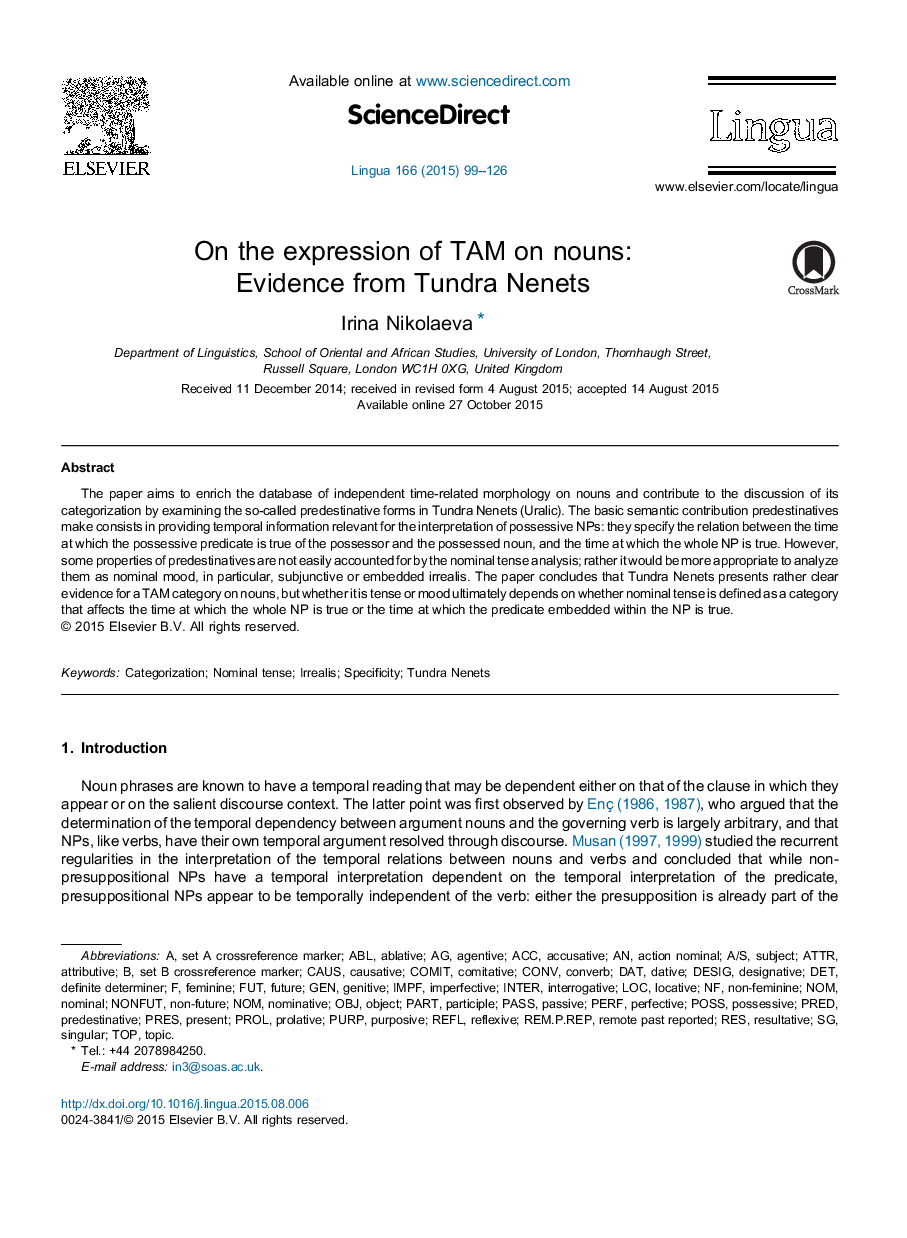| Article ID | Journal | Published Year | Pages | File Type |
|---|---|---|---|---|
| 935262 | Lingua | 2015 | 28 Pages |
•Predestinative forms of possessed nouns in Tundra Nenets are examined.•Predestinatives indicate the time of the possessive relation.•Predestinatives can be analyzed as tense which scopes over NP-internal predicate.•Predestinatives also have modal properties comparable to those of subjunctives.•The modal properties of nominal tense are relevant for larger syntactic contexts.
The paper aims to enrich the database of independent time-related morphology on nouns and contribute to the discussion of its categorization by examining the so-called predestinative forms in Tundra Nenets (Uralic). The basic semantic contribution predestinatives make consists in providing temporal information relevant for the interpretation of possessive NPs: they specify the relation between the time at which the possessive predicate is true of the possessor and the possessed noun, and the time at which the whole NP is true. However, some properties of predestinatives are not easily accounted for by the nominal tense analysis; rather it would be more appropriate to analyze them as nominal mood, in particular, subjunctive or embedded irrealis. The paper concludes that Tundra Nenets presents rather clear evidence for a TAM category on nouns, but whether it is tense or mood ultimately depends on whether nominal tense is defined as a category that affects the time at which the whole NP is true or the time at which the predicate embedded within the NP is true.
